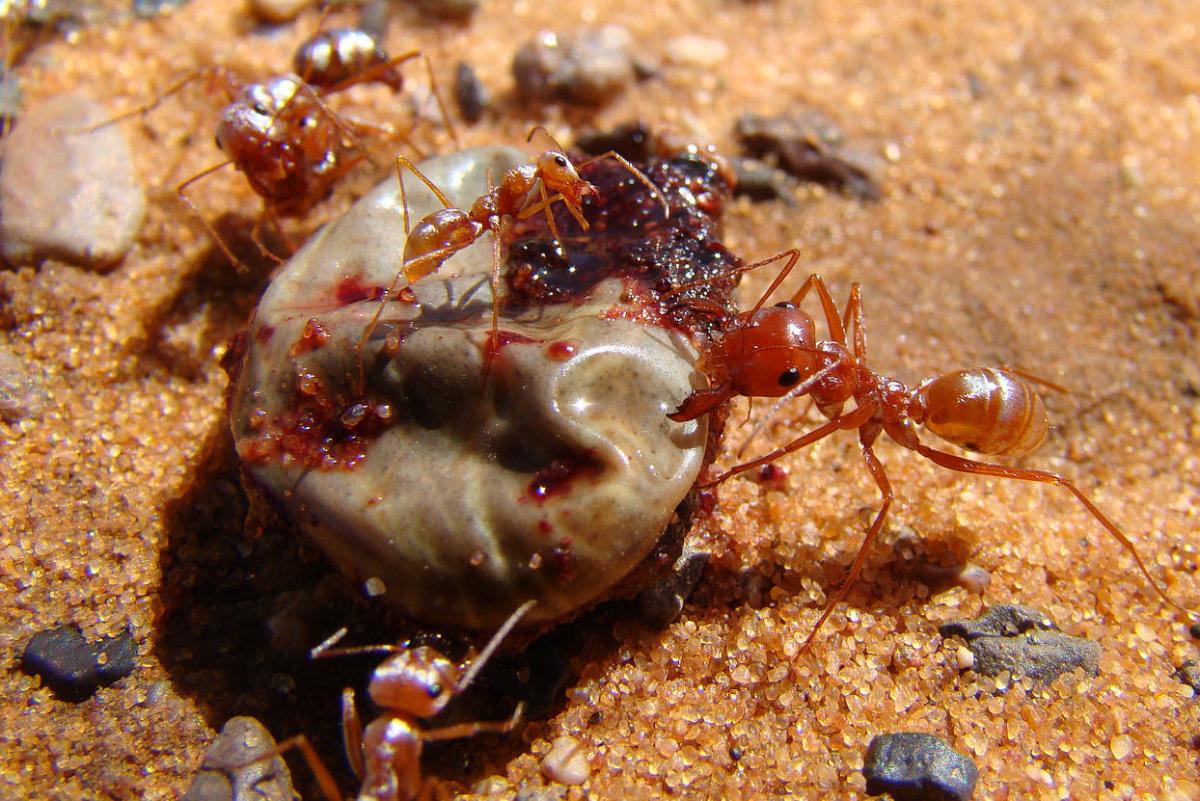D: What are these ants doing, Yaël? They’re walking all over the place, but they keep stopping to glance back at that one spot on the ground.
Y: It looks like they’re doing their learning walks, Don. Desert ants spend the first four weeks of their lives in their underground nest. They keep themselves busy by digging tunnels, building chambers, and doing general maintenance inside. When it’s time for them to take up their jobs as foragers, they first have to make sure they know how to get back to the nest, which they do by taking learning walks for two to three days.
D: They use the sun and landmarks to help them navigate back home, right?
Y: Not only that. After research showed that desert ants could return home even without the sun or landscape cues, scientists guessed that the ants must be using something else to help them navigate—perhaps detecting the tiny changes in the strength of the Earth’s magnetic field in different locations. To test this hypothesis, researchers passed an electric current through two Helmholtz coils to create a magnetic field between them while observing ants doing their learning walks. Instead of looking back at their nests, the ants glanced back at a consistent, different location. Because this change in the magnetic field affected the ants’ abilities to navigate, scientists concluded that the ants used the magnetic field to help them get where they needed to go.
D: I wish I could do that. The magnetic field sounds more reliable than my GPS.
Y: At least when you don’t have a team of researchers toying around with it.









